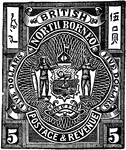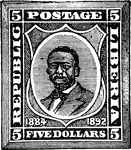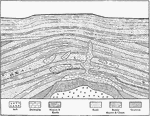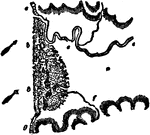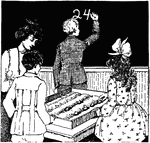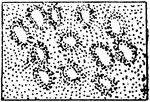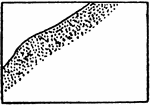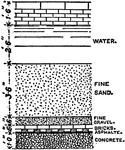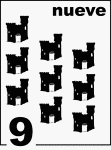
Spanish Sandcastle Counting Card 9
Spanish Counting Card featuring illustrations of nine Sandcastles.
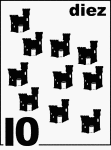
Spanish Sandcastle Counting Card 10
Spanish Counting Card featuring illustrations of ten Sandcastles.
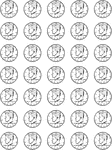
Array of Half Dollars
An array of multiple illustrations of the portrait side of a U.S. Half Dollar.

Gold Three Dollars Coin, 1854
Three Dollars ($3.00) United States coin from 1854. Obverse has a left-facing indian head with a coronet…

Paper Money, Ten Dollars Bill, 1776
Ten Dollar Bill ($10) Georgia currency from 1776. Image of a palm tree and a stone. Type set with three…

Paper Money, Five Dollars Bill, 1776
Five Dollars ($5) South Carolina currency from 1776. Image of a horse surrounded by the inscription…
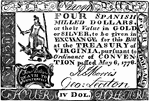
Paper Money, Four Dollars Bill, 1776
Four Dollars ($4) Virginia currency from 1776. Image is the new Coat of Arms for the State of Virginia.
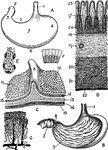
Views of the Stomach
Views of the stomach. Labels: A. stomach (human). B. Same, anterior wall removed. C. Portion of stomach,…
Sharpened Pencil
The lead can be sharpened to a chisel edge by rubbing it against a bit of sand paper or a fine file,…
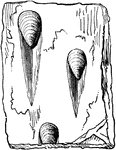
Rill Marks
Marks made by water spreading over shells of stones that are lodged in the sand, in this image in Silurian…

Oil Accumulation
"Idealized section through a dome showing sand-filled channels in cross-section, points of accumulation…

Reservoir
"A reservoir in the geological sense is that portion of a sand-body or other rock in place, with pores…
Dune and Wind
"Profile of a dune, from back to front, showing its relation to the wind. The flow-lines of air are…
Dune Progress
"Diagram of the progress of a dune, from a to be. The arrow flies with the wind. A live tree standing…

Beach Grass
"Beach grass (Ammophila arenaria): a, empty glumes; b, floret; c, palea." -Department of Agriculture,…

Creeping Panic Grass
"Creeping panic grass (Panicum repens): a, b, c, spikelets; d, e, f, florets." Department of Agriculture,…

Redfield's Grass
"Redfield's grass (Redfieldia flexuosa): a, spikelet; b, floret; c, flower." -Department of Agriculture,…

Sand Grass
"Sand grass (Calamovilfa longifolia): a, spikelet; b, spikelet, empty glumes removed." -Department of…

Yellow Lyme Grass
"Yellow lyme grass (Elymus flavescens): a, empty glumes; b, spikelet, empty glumes removed." -Department…

Sand Blue Grass
"Sand blue grass (Poa leckenbyi): a, empty glumes; b, spikelet, empty glumes removed; c, floret; d,…

Underground Waters
The image shows different layers of clay, gravel, and sand and how underground waters travel through.…
Barrier Beach
"Where the sea bottom has a very gentle slope, the waves break at some distance from the shore and the…

Sand Lizard Viscera
"Lacerta agilis. General view of the viscera in their naturaal relations. Bl, urinary bladder; Ci, post-caval…
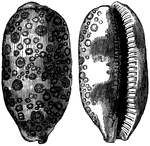
Cypraea Argus (Linn.)
"The Cowries are found at a little distance from the shore, generally in clefts of the rocky bottoms;…
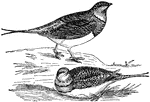
Pin-Tailed Sand-Grouse
"These birds have as distinctive features a short beak, a small head, a round and massive body, bare…

Comparative Volumes Of A Pyramid And Prism
Illustration used to compare the volumes of a pyramid and a prism by emptying sand from the pyramid…
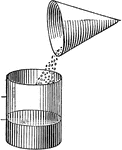
Comparative Volumes Of A Cone And Cylinder
Illustration used to compare the volumes of a cone and a cylinder by emptying sand from the cone into…
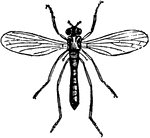
Vermilea de Geeri
"The larva makes a small tunnel in the sand, having a conical mouth, where it waits, like the spider,…
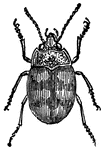
Omophron Libatum
"They are small almost globular, of a pale yellow with green lines, an live in sand bordering rivers."

Nebria Arenaria
"They are small almost globular, of a pale yellow with green lines, an live in sand bordering rivers.…
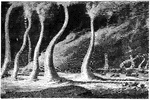
Sand-Storm in the Desert
A dust storm or sandstorm is a meteorological phenomenon common in arid and semi-arid regions and arises…

Southern Adderstongue
Ophioglossum vulgatum, or Southern Adderstongue is a fern-like plant commonly growing in sand dunes.
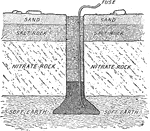
Diagram of Nitrate Bed
The nitrate is found on the east side of a low range of hills from fifteen to ninety miles back from…

Florida Rosemary
The Florida Rosemary: "Ceratiola ericoides. 1. a male flower; 2. a female; 3. a view of the ovary, with…

Whtie Sand Verbena
"Abronia mellifera; 2. a flower separate; 3. its stamens and pistil; 4. the pistil separate; 5. the…

Hanging Clothes
An illustration of clothes hanging on a clothes line with shoe sand gloves resting beneath.
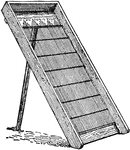
Sand Screen
The sand screen or sand sifter is used to sift out pebbles, stones, and shells from sand.

William Marcy Tweed
William M. Tweed (April 3, 1823 – April 12, 1878), sometimes informally called Boss Tweed, was an…
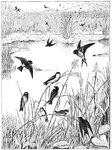
Swallow Roost
The Sand Martin (Riparia riparia) is a migratory passerine bird in the swallow family. This species…

Sandfish Skink
The sandfish (Scincus scincus) is a species of skink known for burrowing into the sand.

Flea Larva
An illustration of the larva of a common flea. Flea larvae emerge from the eggs to feed on any available…

Common Shrimp
The Common Shrimp (Crangon crangon) is a shrimp fished mainly in the North Sea. The species is also…

Northern Whiting
The Northern Whiting (Sillago sihama) is a fish in the Sillaginidae family of smelt-whitings.
Atlantic Silverside
The Atlantic Silverside (Menidia menidia) is a common fish in the Atherinopsidae family of neotropical…
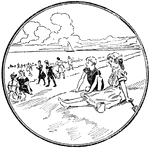
Relaxing on the Beach
Two young people sitting on the beach. Others are walking along the shore. There is a sailboat in the…

